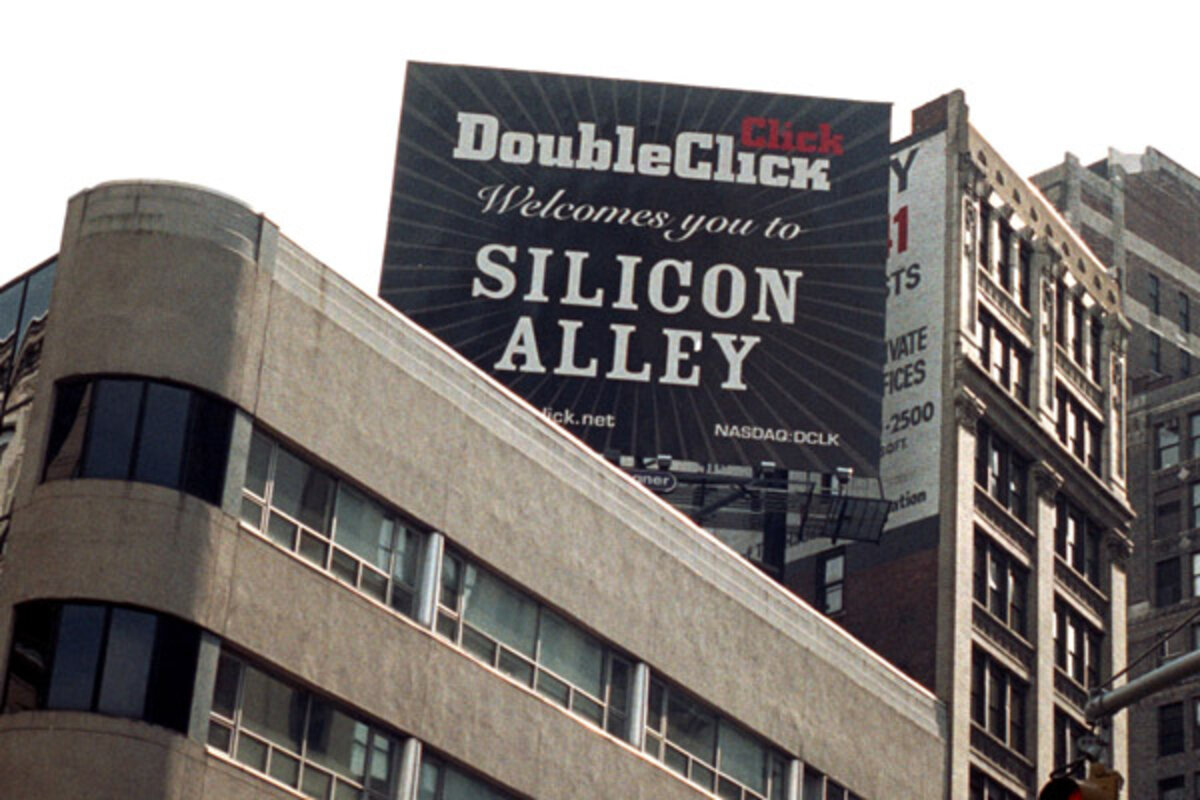Why New York's 'Silicon Alley' may never match Silicon Valley
Loading...
| New York
The next MIT is destined for N.Y.C., says New York Mayor Michael Bloomberg – although critics of his plan for a world-class, applied-science school in the Big Apple question whether the city’s Silicon Alley will ever rival California’s Silicon Valley.
Under the plan, which Mr. Bloomberg announced Tuesday, the city would offer free land and up to $100 million in infrastructure funds to a university willing to establish an applied-science and engineering school in New York.
But since the city first floated the idea in December, opponents have questioned the wisdom of building a campus from scratch, rather than expanding New York’s existing research institutes.
“It just seems extraordinarily odd to me – to say that, ‘We have these jewels in the crown of New York City, but let’s look outside of them to develop an applied-sciences institute,’ ” says William Zajc, chair of the physics department at Columbia University in New York.
According to the city, a high-tech school could generate hundreds of new businesses, thousands of jobs, and millions of dollars in tax revenues. Although New York is already home to several graduate engineering schools – including Columbia’s Fu Foundation School of Engineering and Applied Science, as well as the Polytechnic Institute of New York University – none is in the Top 10 rankings by U.S. News and World Report.
Earlier this year, 27 US institutions – including Columbia, Stanford, and the University of Chicago – sent preliminary proposals for the new school, as did institutions from eight other nations. Once the final proposals are submitted this fall, the city will select a winner by the end of the year.
Mr. Zajc called “silly” the idea of building a stand-alone school of applied science, separate from the basic sciences such as chemistry and biology. If the city focuses its energy and investments on the new center, he adds, then existing schools like Columbia would be left to compete “with one foot in the bucket.”
Top-flight tech schools require decades of sustained investment, says Massachusetts Institute of Technology professor Edward Roberts, who founded the school’s Entrepreneurship Center.
Mr. Roberts and a colleague conducted a large-scale survey, using 2006 data, that found MIT alumni had started more than 25,000 companies, which employ millions of people and generate $2 trillion in annual sales. All this, Roberts says, takes time.
“If MIT only started 10 years ago,” he says, “we would have had a very short report.”
MIT alumni, he notes, are much more likely to develop start-ups than are current students or faculty. This puts any new tech school, which won’t have an alumni network, at a disadvantage.
“There’s a lot of frustration New York is going to face if they think this is a short-term investment,” says Roberts, who met with New York Deputy Mayor Robert Steel in March, while the city was developing the initiative.
“Will the next mayor look at the budget of this university and say, ‘Hey, what are you doing for us lately?’ ” Roberts asks. “The answer will probably be, ‘Not very much.’ ”
Other critics question whether New York will ever rival Silicon Valley or Boston in the ability to transfer cutting-edge research in energy, medicine, software, and other sciences into innovative start-ups. At present, the city is known for high taxes, expensive office space, and large-scale investment firms.
Still, the institutions planning to compete for the city land and funding believe in New York’s high-tech potential – perhaps, in part, because of Bloomberg’s big push.
“The mayor has caught everyone’s imagination with this [initiative], including ours,” says David Skorton, president of Cornell University, which is based in Ithaca, N.Y., and plans to submit a proposal to the city.
Mr. Skorton emphasizes that Cornell’s New York City campus would not be a “start-up,” since the university already maintains some 10 sites in the city with about 5,000 employees. The new applied-science school would be organized around multi-disciplinary “hubs,” rather than departments, which Skorton says will foster an “innovation ecosystem.”
“We’re for real,” he says. “We serve New York City now, and we’re going to continue to serve N.Y.C. – hopefully through this mechanism.”
In a speech in the Grand Hyatt ballroom in Manhattan Tuesday, where many of the city’s business and policy leaders had converged for a conference on the future of New York, Bloomberg said the tech-school plan was part of his ongoing effort to “drag our city out of the past.”
He sees a New York economy emerging from the plan that stands on firmer ground, relying less on “Wall Street’s booms and busts.”
Bloomberg may have some personal reasons to support high-tech innovation. He studied electrical engineering at Johns Hopkins University in Baltimore, then founded a financial software and data company, which made him a billionaire.
“When I created Bloomberg L.P. in 1981, no one called us a start-up,” the mayor said Tuesday. “But that’s what we were.”




